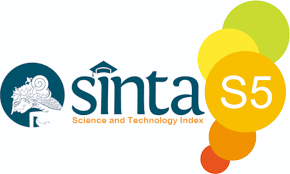Optimalisasi UMKM Melalui Triple Helix Kolaborasi
Abstract
ABSTRAK
Penelitian ini bertujuan untuk menganalisis efektivitas kolaborasi Triple Helix akademisi,
pemerintah, dan sektor swasta dalam pemberdayaan UMKM berbasis perbankan syariah di
Kecamatan Pedurungan, Kota Semarang. Penelitian ini menggunakan pendekatan kualitatif dengan
menggunakan metode deskriptif. Pengumpulan data diperoleh melalui dokumentasi program dan
wawancara, data dianalisis secara tematik dengan menggunakan triangulasi sumber dan member
check. Hasil penelitian menunjukkan bahwa implementasi model Triple Helix belum berjalan
dengan baik. Sebagian besar nasabah menggunakan dana tersebut untuk kebutuhan rumah tangga,
pengelolaan keuangan belum terpisah, inovasi produk baru belum dilakukan, dan akses pasar masih
terbatas. Lembaga akademisi hanya berfokus pada memotivasi dan penyuluhan dasar, sektor swasta
membantu nasabah tanpa bertindak terlalu jauh, dan pemerintah hampir tidak terlibat dalam
dukungan nyata. Temuan ini menunjukkan bahwa meskipun model Triple Helix berpotensi
mengoptimalkan UMKM, diperlukan strategi sinergi yang lebih integratif, termasuk peningkatan
literasi keuangan, pengembangan produk inovatif, dan penyediaan fasilitasi seperti izin usaha serta
akses pasar digital yang berkelanjutan. Kebaruan penelitian ini terletak pada analisis implementasi
praktis model Triple Helix dalam konteks UMKM di bidang perbankan syariah melalui program
pemberdayaan berbasis komunitas, yang jarang dieksplorasi dalam penelitian sebelumnya.
ABSTRACT
This study aims to analyze the effectiveness of Triple Helix collaboration between academics, government,
and the private sector in empowering MSMEs based on Islamic banking in Pedurungan District, Semarang
City. This study uses a qualitative approach with a descriptive method. Data collection was obtained through
program documentation and interviews, and the data was analyzed thematically using source triangulation
and member checking. The results show that the implementation of the Triple Helix model has not been
successful. Most customers use the funds for household needs, financial management is not yet separate, new
product innovations have not been made, and market access is still limited. Academic institutions only focus
on motivation and basic counseling, the private sector helps customers without going too far, and the
government is hardly involved in providing real support. These findings indicate that although the Triple
Helix model has the potential to optimize MSMEs, a more integrative synergy strategy is needed, including
improving financial literacy, developing innovative products, and providing facilitation such as business
licenses and sustainable digital market access. The novelty of this research lies in the analysis of the practical
implementation of the Triple Helix model in the context of MSMEs in the field of Islamic banking through
community-based empowerment programs, which have rarely been explored in previous studies.




